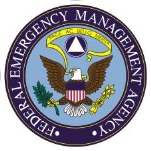Located within the Department of Homeland Security, the Federal Emergency Management Agency (FEMA) is responsible for coordinating the federal government’s response to natural and manmade disasters. FEMA is charged with providing both immediate and long-term assistance to local and state governments as well as individuals. Throughout its almost 30-year history, FEMA has been synonymous with the word “disaster.” Not only is this because of the agency’s mission to assist in times of crisis, but also due to its long record of mistakes and, in some cases, failures that have exacerbated suffering caused by storms, fires or earthquakes.
The federal government has provided disaster relief in one form or another since the early 19th century. The Congressional Act of 1803 is considered the first piece of disaster legislation in US history, providing assistance to a New Hampshire town following an extensive fire. Over the next century ad hoc legislation was passed more than 100 times in response to hurricanes, earthquakes, floods and other natural disasters. Laws unique to each disaster authorized financial assistance to victims and both personnel and equipment to assist in recovery and clean up.
FEMA regroups after Katrina, but some question its readiness
(by Robert Block, Wall Street Journal)
Located within the Department of Homeland Security, the Federal Emergency Management Agency (FEMA) is responsible for coordinating the federal government’s response to disasters. FEMA is charged with providing help to local and state governments and residents both immediately following a disaster and in the longer term. It also conducts programs to help prepare for disasters. The kinds of assistance FEMA provides ranges from advising on building codes and flood plain management to helping equip local and state emergency agencies to coordinating the federal response to a disaster. FEMA’s Organizational Structure (PDF) consists of offices that handle preparation, response, recovery and risk reduction.
- Region I (Connecticut, Maine, Massachusetts, New Hampshire, Rhode Island, Vermont)
- Region II (New Jersey, New York, Puerto Rico, and the Virgin Islands)
- Region III (Delaware, District of Columbia, Maryland, Pennsylvania, Virginia and W. Virginia)
- Region IV (Alabama, Florida, Georgia, Kentucky, Mississippi, N. Carolina, S. Carolina and Tennessee)
- Region V (Illinois, Indiana, Michigan, Minnesota, Ohio and Wisconsin)
- Region VI (Arkansas, Louisiana, New Mexico, Oklahoma and Texas)
- Region VII (Iowa, Kansas, Missouri and Nebraska)
- Region VIII (Colorado, Montana, N. Dakota, S. Dakota, Utah and Wyoming)
- Region IX (Arizona, California, Hawaii, Nevada, American Samoa, Guam, Commonwealth of the Northern Mariana Islands, Republic of the Marshall Islands, and Federated States of Micronesia)
- Region X (Alaska, Idaho, Oregon and Washington)
In an effort to reduce the cost and damage of flood disasters, FEMA oversees the
Federal Insurance Administration (FIA)
. The FIA partners with national insurance companies to provide affordable flood insurance. Local communities can become eligible for such insurance by enforcing floodplain management practices.
Virtually every American is a potential key stakeholder of FEMA, depending on when a particular disaster might strike. From earthquakes out west to tornadoes in the plains state and south to hurricanes along the Atlantic seaboard, the agency is one of the most important in the federal government when it comes to its potential impact on lives when a crisis occurs. FEMA provides information for those in potential danger of floods due to storms or levy breaks. See Levee Information for Stakeholders.
- American National Insurance Company
- ACE USA
- Acuity
- Allstate
- Alfa Mutual Insurance
- American Family Insurance
- American National Property and Casualty
- American International Group
- Argonaut Group, Inc.
- Auto-Owners Insurance
- BISYS Commercial Insurance Services, Inc.
- Chubb Corporation
- Church Mutual
- Cincinnati Financial Corporation
- CNA Financial Corporation
- Farm Bureau Insurance
- Farmers Insurance
- Fireman's Fund Insurance Company
- FM Global
- Frankenmuth Mutual Insurance Company
- Great American Insurance Company
- The Hartford
- Hastings Mutual Insurance Company
- Harleysville Insurance Company
- Infinity Property & Casualty
- Island Insurance
- Liberty Mutual
- Manulife Financial
- Markel Corporation
- Nationwide Insurance
- OneBeacon Insurance Group
- Philadelphia Insurance
- The St. Paul Travelers Companies, Inc.
- Safeway Insurance Group
- Secura
- Sentry Insurance
- Shelter Insurance Companies
- State Farm Insurance
- Southern Farm Bureau
- Union Standard Insurance
- Wausau Insurance Companies
- West Bend Mutual Insurance Company
- Westfield Insurance
Underground Fuel Tanks Could Leak
(YouTube)
Although considerable changes have been implemented at FEMA to improve the effectiveness of the agency, the Government Accountability Office (GAO) has continued to find shortcomings. In just the first two months of 2008, four GAO reports were issued pointing out problems with FEMA’s programs to provide adequate mental health counseling to disaster victims; improve coordination between government agencies and non-profits; provide emergency transit assistance during disasters; and better manage disaster-related resources.
- Table of Contents
- Overview
- History
- What it Does
- Where Does the Money Go
- Controversies
- Suggested Reforms
- Comments
- Leave a comment

William Brockmann “Brock” Long, whose entire career has been spent in emergency management in the public and private sectors, was announced on April 28, 2017, as the director of the Federal Emergency Management Agency (FEMA). He was confirmed by a 95-4 U.S. Senate vote on June 20, 2017.
Long was born April 16, 1975, and is from Newton, North Carolina, son of William, a physician, and Kay. Long graduated from Newton-Conover High School and attended Appalachian State University. He earned a B.S. in criminal justice in 1997 and a master’s in public administration in 1999.
Long entered the emergency management field right out of college, joining Georgia’s emergency management agency as a planner and school safety coordinator. He joined the George W. Bush administration in November 2001 as a hurricane program manager in FEMA for six states—Alabama, Florida, Mississippi, Georgia, South Carolina and North Carolina, but, significantly, not Louisiana, which bore the brunt of Hurricane Katrina in 2005. One of his achievements was the distribution of a hurricane computer game for grade-school students that focused on preparedness for such storms.
Long left FEMA in 2006. The following year, he was named southeast regional director for Beck Disaster Recovery, a consulting firm that specialized in emergency planning, disaster training and post-event recovery. In January 2008, Long became director of the Alabama Emergency Management Agency, where he directed the state’s response to incidents as different as the H1N1 flu virus and the BP Deepwater Horizon oil disaster in the Gulf of Mexico, as well as hurricanes and other storms. Long’s experience with schools was particularly prized by Alabama after a school in the town of Enterprise collapsed during a 2007 tornado, killing eight students.
Long also served on the board of directors of the Central United States Earthquake Consortium.
He returned to the private sector in January 2011 as an executive vice president for Hagerty Consulting, which advises on homeland security and emergency management issues. He is also the private sector chairman of the National Emergency Management Association, which brings together the state directors of emergency services.
Long and his wife, Amanda, have two sons: William and Isaac. They make their home in Hickory, North Carolina.
-Steve Straehley
To Learn More:
Brock Long (LinkedIn)
Brock Long (Hagetrty Consulting)

Taking over the Federal Emergency Management Agency (FEMA), one of the most historically ridiculed federal operations in the United States, is W. Craig Fugate, whom some have called “Mr. Hurricane.” Fugate brings a long resume of tackling disasters, after heading up Florida’s version of FEMA for most of this decade. Fugate assumed the office in May 2009.
- Latest News
- D.C. Public Schools will Teach all Second-Graders to Ride a Bike
- New Rule in Germany Limits Sales of Sex-Themed E-Books to 10pm to 6am
- What Happened to the 6-Year-Old Tibetan Boy the Chinese Government Kidnapped 20 Years Ago?
- U.S. Ambassador to Turkey Photoshops his Hair Color to Mock Turkish Mayor
- Mystery Artist Calls Attention to Unfixed Potholes by Drawing Penises around Them
Located within the Department of Homeland Security, the Federal Emergency Management Agency (FEMA) is responsible for coordinating the federal government’s response to natural and manmade disasters. FEMA is charged with providing both immediate and long-term assistance to local and state governments as well as individuals. Throughout its almost 30-year history, FEMA has been synonymous with the word “disaster.” Not only is this because of the agency’s mission to assist in times of crisis, but also due to its long record of mistakes and, in some cases, failures that have exacerbated suffering caused by storms, fires or earthquakes.
The federal government has provided disaster relief in one form or another since the early 19th century. The Congressional Act of 1803 is considered the first piece of disaster legislation in US history, providing assistance to a New Hampshire town following an extensive fire. Over the next century ad hoc legislation was passed more than 100 times in response to hurricanes, earthquakes, floods and other natural disasters. Laws unique to each disaster authorized financial assistance to victims and both personnel and equipment to assist in recovery and clean up.
FEMA regroups after Katrina, but some question its readiness
(by Robert Block, Wall Street Journal)
Located within the Department of Homeland Security, the Federal Emergency Management Agency (FEMA) is responsible for coordinating the federal government’s response to disasters. FEMA is charged with providing help to local and state governments and residents both immediately following a disaster and in the longer term. It also conducts programs to help prepare for disasters. The kinds of assistance FEMA provides ranges from advising on building codes and flood plain management to helping equip local and state emergency agencies to coordinating the federal response to a disaster. FEMA’s Organizational Structure (PDF) consists of offices that handle preparation, response, recovery and risk reduction.
- Region I (Connecticut, Maine, Massachusetts, New Hampshire, Rhode Island, Vermont)
- Region II (New Jersey, New York, Puerto Rico, and the Virgin Islands)
- Region III (Delaware, District of Columbia, Maryland, Pennsylvania, Virginia and W. Virginia)
- Region IV (Alabama, Florida, Georgia, Kentucky, Mississippi, N. Carolina, S. Carolina and Tennessee)
- Region V (Illinois, Indiana, Michigan, Minnesota, Ohio and Wisconsin)
- Region VI (Arkansas, Louisiana, New Mexico, Oklahoma and Texas)
- Region VII (Iowa, Kansas, Missouri and Nebraska)
- Region VIII (Colorado, Montana, N. Dakota, S. Dakota, Utah and Wyoming)
- Region IX (Arizona, California, Hawaii, Nevada, American Samoa, Guam, Commonwealth of the Northern Mariana Islands, Republic of the Marshall Islands, and Federated States of Micronesia)
- Region X (Alaska, Idaho, Oregon and Washington)
In an effort to reduce the cost and damage of flood disasters, FEMA oversees the
Federal Insurance Administration (FIA)
. The FIA partners with national insurance companies to provide affordable flood insurance. Local communities can become eligible for such insurance by enforcing floodplain management practices.
Virtually every American is a potential key stakeholder of FEMA, depending on when a particular disaster might strike. From earthquakes out west to tornadoes in the plains state and south to hurricanes along the Atlantic seaboard, the agency is one of the most important in the federal government when it comes to its potential impact on lives when a crisis occurs. FEMA provides information for those in potential danger of floods due to storms or levy breaks. See Levee Information for Stakeholders.
- American National Insurance Company
- ACE USA
- Acuity
- Allstate
- Alfa Mutual Insurance
- American Family Insurance
- American National Property and Casualty
- American International Group
- Argonaut Group, Inc.
- Auto-Owners Insurance
- BISYS Commercial Insurance Services, Inc.
- Chubb Corporation
- Church Mutual
- Cincinnati Financial Corporation
- CNA Financial Corporation
- Farm Bureau Insurance
- Farmers Insurance
- Fireman's Fund Insurance Company
- FM Global
- Frankenmuth Mutual Insurance Company
- Great American Insurance Company
- The Hartford
- Hastings Mutual Insurance Company
- Harleysville Insurance Company
- Infinity Property & Casualty
- Island Insurance
- Liberty Mutual
- Manulife Financial
- Markel Corporation
- Nationwide Insurance
- OneBeacon Insurance Group
- Philadelphia Insurance
- The St. Paul Travelers Companies, Inc.
- Safeway Insurance Group
- Secura
- Sentry Insurance
- Shelter Insurance Companies
- State Farm Insurance
- Southern Farm Bureau
- Union Standard Insurance
- Wausau Insurance Companies
- West Bend Mutual Insurance Company
- Westfield Insurance
Underground Fuel Tanks Could Leak
(YouTube)
Although considerable changes have been implemented at FEMA to improve the effectiveness of the agency, the Government Accountability Office (GAO) has continued to find shortcomings. In just the first two months of 2008, four GAO reports were issued pointing out problems with FEMA’s programs to provide adequate mental health counseling to disaster victims; improve coordination between government agencies and non-profits; provide emergency transit assistance during disasters; and better manage disaster-related resources.
Comments

William Brockmann “Brock” Long, whose entire career has been spent in emergency management in the public and private sectors, was announced on April 28, 2017, as the director of the Federal Emergency Management Agency (FEMA). He was confirmed by a 95-4 U.S. Senate vote on June 20, 2017.
Long was born April 16, 1975, and is from Newton, North Carolina, son of William, a physician, and Kay. Long graduated from Newton-Conover High School and attended Appalachian State University. He earned a B.S. in criminal justice in 1997 and a master’s in public administration in 1999.
Long entered the emergency management field right out of college, joining Georgia’s emergency management agency as a planner and school safety coordinator. He joined the George W. Bush administration in November 2001 as a hurricane program manager in FEMA for six states—Alabama, Florida, Mississippi, Georgia, South Carolina and North Carolina, but, significantly, not Louisiana, which bore the brunt of Hurricane Katrina in 2005. One of his achievements was the distribution of a hurricane computer game for grade-school students that focused on preparedness for such storms.
Long left FEMA in 2006. The following year, he was named southeast regional director for Beck Disaster Recovery, a consulting firm that specialized in emergency planning, disaster training and post-event recovery. In January 2008, Long became director of the Alabama Emergency Management Agency, where he directed the state’s response to incidents as different as the H1N1 flu virus and the BP Deepwater Horizon oil disaster in the Gulf of Mexico, as well as hurricanes and other storms. Long’s experience with schools was particularly prized by Alabama after a school in the town of Enterprise collapsed during a 2007 tornado, killing eight students.
Long also served on the board of directors of the Central United States Earthquake Consortium.
He returned to the private sector in January 2011 as an executive vice president for Hagerty Consulting, which advises on homeland security and emergency management issues. He is also the private sector chairman of the National Emergency Management Association, which brings together the state directors of emergency services.
Long and his wife, Amanda, have two sons: William and Isaac. They make their home in Hickory, North Carolina.
-Steve Straehley
To Learn More:
Brock Long (LinkedIn)
Brock Long (Hagetrty Consulting)

Taking over the Federal Emergency Management Agency (FEMA), one of the most historically ridiculed federal operations in the United States, is W. Craig Fugate, whom some have called “Mr. Hurricane.” Fugate brings a long resume of tackling disasters, after heading up Florida’s version of FEMA for most of this decade. Fugate assumed the office in May 2009.
- Latest News
- D.C. Public Schools will Teach all Second-Graders to Ride a Bike
- New Rule in Germany Limits Sales of Sex-Themed E-Books to 10pm to 6am
- What Happened to the 6-Year-Old Tibetan Boy the Chinese Government Kidnapped 20 Years Ago?
- U.S. Ambassador to Turkey Photoshops his Hair Color to Mock Turkish Mayor
- Mystery Artist Calls Attention to Unfixed Potholes by Drawing Penises around Them






Comments